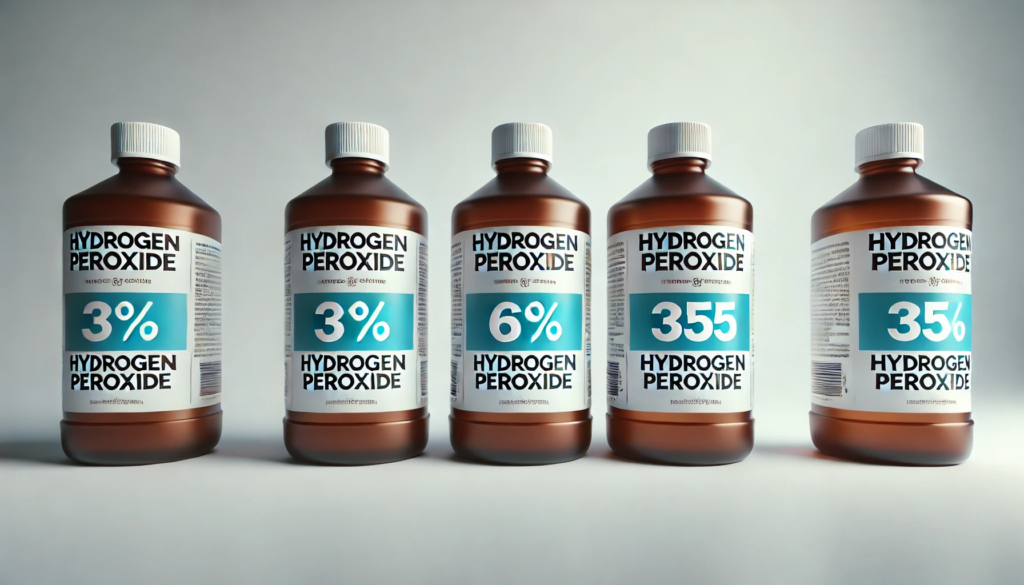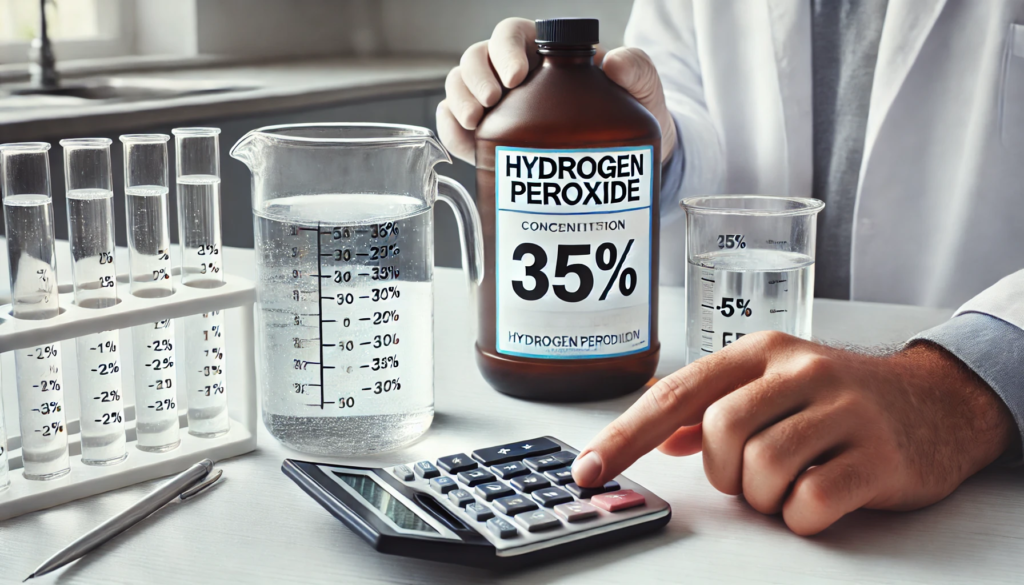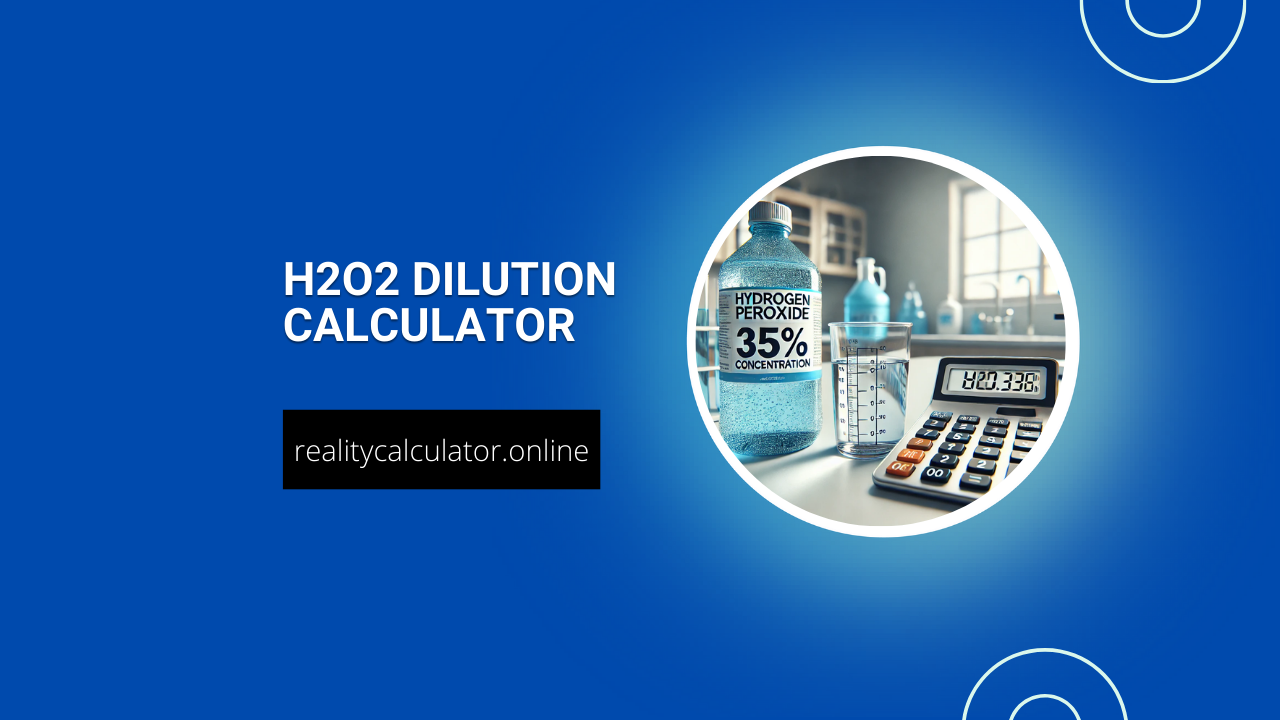H2o2 Dilution Calculator
Hydrogen peroxide (H2O2) is a powerful disinfectant and antiseptic used for a variety of purposes, such as wound cleaning, household cleaning, and even gardening.
However, using it at full strength can be dangerous, which is why dilution is necessary for many applications.
This is where an H2O2 dilution calculator comes in handy, allowing you to dilute hydrogen peroxide to the desired concentration quickly and safely.
In this blog post, we’ll explore the importance of diluting hydrogen peroxide, how to use an H2O2 dilution calculator, provide safety tips, and answer some frequently asked questions.
What is an H2O2 Dilution Calculator?
An H2O2 dilution calculator is a tool used to determine the amount of water needed to dilute hydrogen peroxide from its original concentration to a lower, safer concentration.
It helps you mix the right ratio for your intended use, ensuring that you don’t under-dilute (which can cause harm) or over-dilute (which reduces effectiveness).

Why Should You Dilute Hydrogen Peroxide?
Hydrogen peroxide is commonly available in different concentrations, such as 3%, 6%, and 35%. Higher concentrations, like 35%, are considered industrial strength and can be dangerous to handle without proper dilution.
Diluting hydrogen peroxide to the correct concentration is essential for several reasons:
- Safety:
High concentrations can cause skin burns, respiratory problems, or other health issues. Dilution reduces these risks. - Effectiveness:
Different applications require different concentrations. For example, wound cleaning typically uses a 3% solution, while household cleaning may use a lower concentration. - Cost Efficiency:
Diluting a higher concentration solution can be more economical than purchasing a pre-diluted product.
How to Use an H2O2 Dilution Calculator
Using an H2O2 dilution calculator is straightforward. Follow these steps to dilute hydrogen peroxide to your desired concentration:
Determine the Original Concentration:
Find out the concentration of the hydrogen peroxide you currently have. This information is typically displayed on the bottle.
Set the Desired Concentration:
Decide the concentration level you need for your application (e.g., 3% for wound cleaning).
Specify the Desired Volume:
Indicate how much diluted solution you want to prepare (e.g., 500 ml).
Calculate:
The calculator will provide the amount of hydrogen peroxide and water needed to achieve your desired concentration and volume.
For example, if you have a 35% solution of hydrogen peroxide and want to dilute it to 3% to make 500 ml, you can calculate the dilution using the formula:Amount of H2O2=(Desired concentrationOriginal concentration)×Desired volume\text{Amount of H2O2} = \left(\frac{\text{Desired concentration}}{\text{Original concentration}}\right) \times \text{Desired volume}Amount of H2O2=(Original concentrationDesired concentration)×Desired volume
This would result in mixing approximately 43 ml of 35% hydrogen peroxide with 457 ml of water.
If you need other calculators, such as a reality calculator for practical assessments or a hattrick stadium calculator for managing football stadiums, you may find those tools helpful for your specific needs.

Common Uses for Different Concentrations of H2O2
- 3% Solution:
Often used for wound cleaning, oral hygiene (diluted further), and minor household cleaning tasks. - 6-9% Solution:
Suitable for more intensive cleaning tasks or gardening purposes. - 10-35% Solution:
Industrial strength, used for laboratory experiments, sterilization, or whitening applications, but always requires proper dilution for safe use.
Safety Precautions When Handling Hydrogen Peroxide
- Wear Protective Gear:
Always wear gloves, eye protection, and, if necessary, a mask when handling concentrated hydrogen peroxide. - Work in a Well-Ventilated Area:
Avoid inhaling fumes by ensuring proper ventilation. - Store Properly:
Store hydrogen peroxide in a cool, dark place, away from direct sunlight, as it can degrade when exposed to light. Label any diluted solutions clearly with the concentration and date of dilution. - Accidental Exposure:
In case of skin contact, rinse immediately with plenty of water. If ingested or inhaled in large quantities, seek medical attention.
For financial planning or lifestyle assessments, consider using tools like the Lifestyle Cost Calculator, which can help you estimate the cost of living in various regions.
Conclusion
An H2O2 dilution calculator is a valuable tool for anyone who regularly uses hydrogen peroxide for cleaning, disinfection, or other applications.
By using the calculator, you can ensure that you achieve the correct concentration for safe and effective use.
Always follow safety guidelines when handling hydrogen peroxide to avoid any potential hazards.




